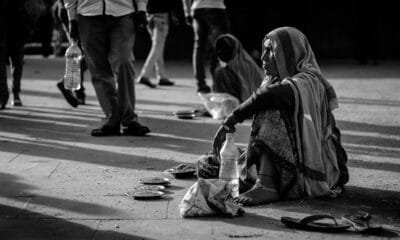Economy
Food inflation hits millions of families already impacted by COVID-19 pandemic economic downturn
Millions of families across India have been hit hard by the food inflation, which shot up to 11.07 per cent in October, the highest in nine months. This has sent the overall retail inflation surging to 7.61 per cent.
Reports across the country state prices of vegetables, including staples and basic commodities are on the rise. While the ongoing COVID-19 pandemic did have significant impact on the manufacturing and supply aspects, demand only went down slightly when companies laid off their employees and people tightened their spending on food. But with restrictions being lifted, and day-to-day life slowly trickling into the new normal, the rise in food prices is being felt across the country.
Economists, according to HT, say the government’s extra spending to revitalize the economy the economy could also keep inflation high. This fiscal year ending March 31, the government is likely to overshoot its budgeted spending of $407.80 billion by more than $60 billion.
Moreover, the inflation spike prevented the Reserve Bank of India from cutting interest rates at its past two meetings. Suman Chowdhury, Chief Analytical Officer Acute Ratings & Research, had pointed out that the larger concern is the impact of consistently high food inflation on core inflation through cost push factors; the relatively high figure for transport and communication is a reflection of high tax driven fuel prices and increase in telecom tariffs. “We believe that inflationary concerns may lead to a delay in further rate cuts and can raise the risks of stagflation. It is also expected to have an adverse impact on bond yields in the near term and may trigger the higher use of liquidity and yield management tools to optimize the cost of government’s borrowings,” he explained.
Also Read: Online retailers try to woo consumers till the last minute with heavy discounts and quick delivery
The rise in food prices is attributed to disruptions in supply due to the government imposed nationwide lockdown to stem the spread of COVID-19 pandemic. Health safety measures and breaks in supply chain also pushed up the prices. Furthermore, Bloomberg has highlighted that the pandemic has already upset domestic farm-to-fork supply chains that provided just enough inventory to meet demand. Neighboring countries, China and Pakistan, are also reeling under high food prices.











































Pingback: Delhi government set to impose lockdown in COVID-19 hotspots, withdraws order allowing 200 guests at functions | The Plunge Daily